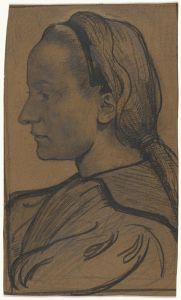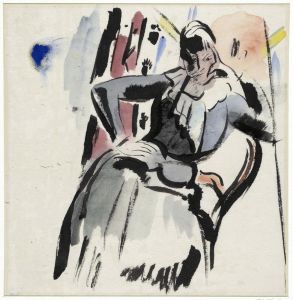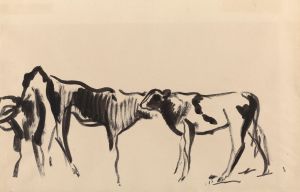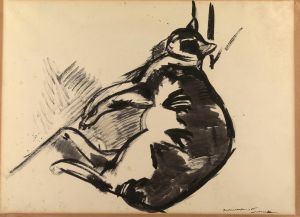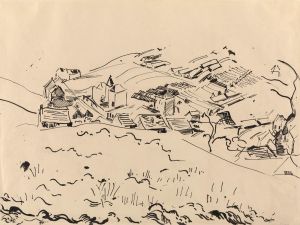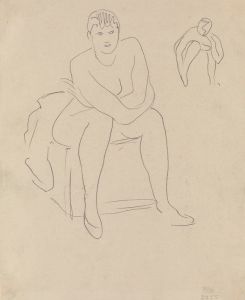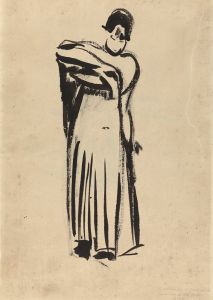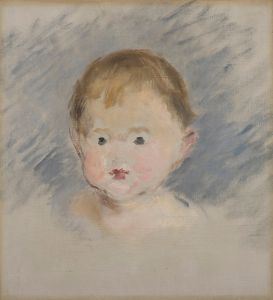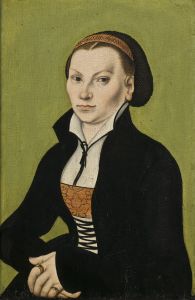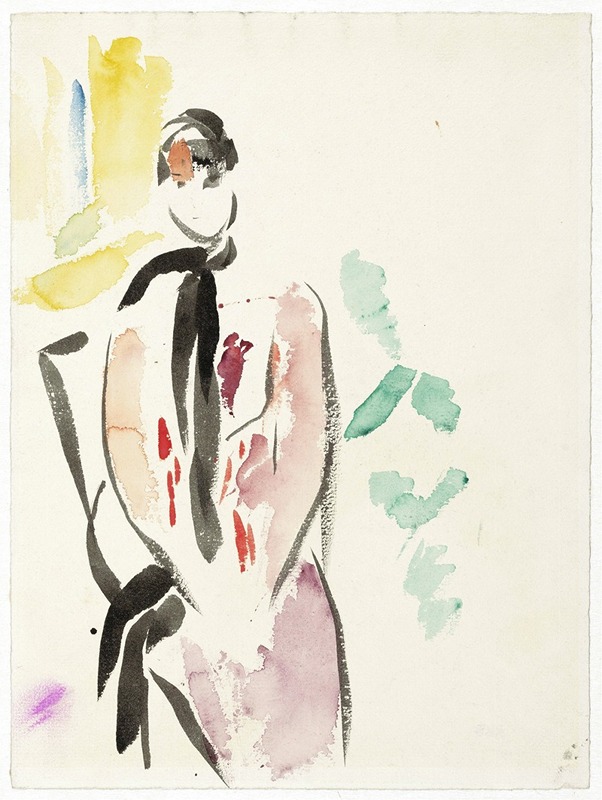
Schets voor een portret van mevrouw De Carnière-Wouters, echtgenote van de kunstenaar
A hand-painted replica of Rik Wouters’s masterpiece Schets voor een portret van mevrouw De Carnière-Wouters, echtgenote van de kunstenaar, meticulously crafted by professional artists to capture the true essence of the original. Each piece is created with museum-quality canvas and rare mineral pigments, carefully painted by experienced artists with delicate brushstrokes and rich, layered colors to perfectly recreate the texture of the original artwork. Unlike machine-printed reproductions, this hand-painted version brings the painting to life, infused with the artist’s emotions and skill in every stroke. Whether for personal collection or home decoration, it instantly elevates the artistic atmosphere of any space.
Rik Wouters, a prominent Belgian painter and sculptor, is known for his vibrant use of color and expressive brushwork, which are hallmarks of the Fauvist movement. One of his notable works is "Schets voor een portret van mevrouw De Carnière-Wouters, echtgenote van de kunstenaar," which translates to "Sketch for a Portrait of Mrs. De Carnière-Wouters, Wife of the Artist." This artwork is a testament to Wouters' personal and artistic life, reflecting his deep connection with his wife, Hélène Duerinckx, who was affectionately known as Nel.
Rik Wouters was born on August 21, 1882, in Mechelen, Belgium. He studied at the Royal Academy of Fine Arts in Brussels, where he developed his skills and artistic vision. Wouters' career, although tragically short due to his untimely death at the age of 33, was marked by a prolific output of paintings, sculptures, and drawings. His work is characterized by a vivid palette and a dynamic style that captures the essence of his subjects with emotional intensity.
The subject of this particular sketch, Nel, played a significant role in Wouters' life and work. She was not only his muse but also a central figure in many of his paintings and sculptures. Their relationship was one of mutual support and inspiration, and Nel's presence in his art is a reflection of their deep bond. Wouters often depicted her in various domestic settings, capturing her in moments of quiet reflection or everyday activities, which added a personal dimension to his work.
"Schets voor een portret van mevrouw De Carnière-Wouters" is a preparatory sketch, which suggests that it was part of Wouters' process in creating a more finished portrait. The sketch likely showcases his ability to capture the essence of his subject with minimal lines and a keen sense of observation. While the final portrait may have been more detailed, the sketch itself is valuable for understanding Wouters' artistic process and his approach to portraiture.
Wouters' style was influenced by the Fauvist movement, which emphasized bold colors and expressive forms. His work often features a vibrant color palette and loose brushwork, which convey a sense of immediacy and emotion. This approach is evident in his portraits, where he captures not just the physical likeness of his subjects but also their inner vitality.
Despite his short career, Rik Wouters left a lasting impact on the art world. His works are celebrated for their emotional depth and technical skill, and they continue to be studied and admired by art enthusiasts and scholars alike. "Schets voor een portret van mevrouw De Carnière-Wouters" is a part of this legacy, offering insight into the personal and artistic life of one of Belgium's most beloved artists.
Today, Wouters' works are housed in various museums and collections, where they continue to inspire and captivate audiences. His ability to blend personal intimacy with artistic innovation makes his work a significant contribution to the early 20th-century art scene.





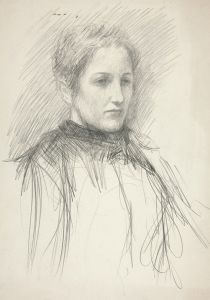
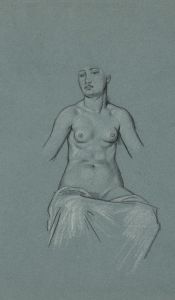
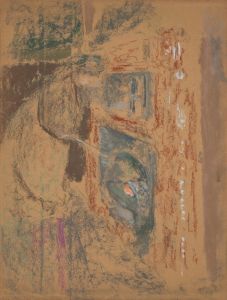
![Untitled [Alanna]](/imgs/219109/s/robert-henri-untitled-alanna-fe4ed77a.jpg)
